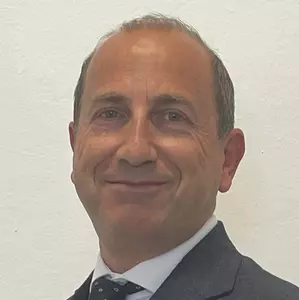Submission 19
Deployment of Synchronous Condensers to Enhance Stability and Safe Operation of the Italian Power Grid
WISO25-19
Presented by: Marco Cioffi
With the increasing integration of renewable energy sources (RES) and high-voltage direct current (HVDC) lines, the electrical grid must adapt and improve to maintain stability and safety. RES are not-programmable energy sources and can cause fluctuations in voltage and frequency in the power system: this requires the grid to sustain a suitable and resilient capacity and inertia. HVDC lines, essential for long-distance power transmission, also impact the grid stability.
Synchronous Condensers (SynConds) can efficiently provide voltage regulation, reactive power, short circuit power, and inertia to the power grid. They improve voltage quality and regulation and enhance the power factor control. By delivering fast dynamic response, these machines react immediately to voltage regulation needs.
SynConds can be designed and carried out by using standard turbogenerators. These machines are fully managed via remote control, allowing seamless management of the grid. A flywheel can be added to further increase system inertia, and it is designed for vacuum operation to minimize energy consumption and acoustic emission.
Ansaldo Energia brings decades of expertise to the table: the journey in the Synchronous Condenser market began with the establishment of the first plant at the Terna Electrical Substation in Codrongianos, in the Sardinia Island. This plant, whose first unit entered into service in 2014, marked a significant milestone in the company's commitment to providing reliable and efficient power solutions.
Ansaldo Energia has established several SynConds plants across Italy in collaboration with Terna, the Italian Transmission System Operator (TSO). These plants are strategically located to provide optimal grid support and enhance the stability of the national power network: currently, most of them are made in the regions of Central and Southern Italy, where the presence of RES is greater.
Other SynConds concepts are achievable, by decommissioning conventional plants (for example, obsolete coal or turbo gas power plant) through the recovery of the turbogenerator, adapting it to the new functional needs: in the paper, the recent experience on such a plant, located in Southern Italy, is presented.
Evolving regulation of the national grid codes and electricity market structure can provide additional opportunities and revenue flows for hybrid systems, where different generation sources (for instance, inverter-based RES, thermal) are coupled, with the possible operation as SynCond to provide balancing services to the grid.
The future of the Synchronous Condenser market looks promising, driven by the increasing integration of renewable energy sources and the need for grid stability. As countries worldwide continue to transition towards cleaner energy, the demand for Synchronous Condensers is expected to grow. These machines will play a crucial role in ensuring the reliability and stability of power grids, supporting the seamless integration of renewable energy.
